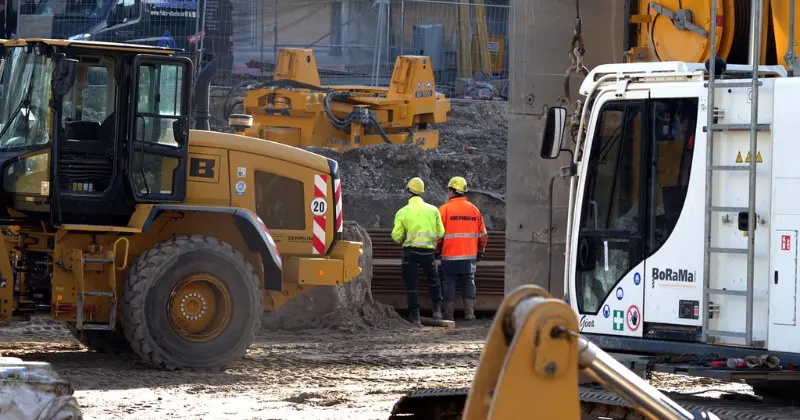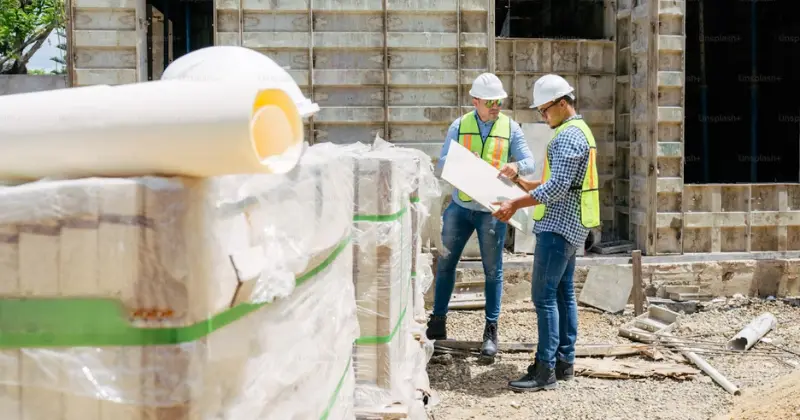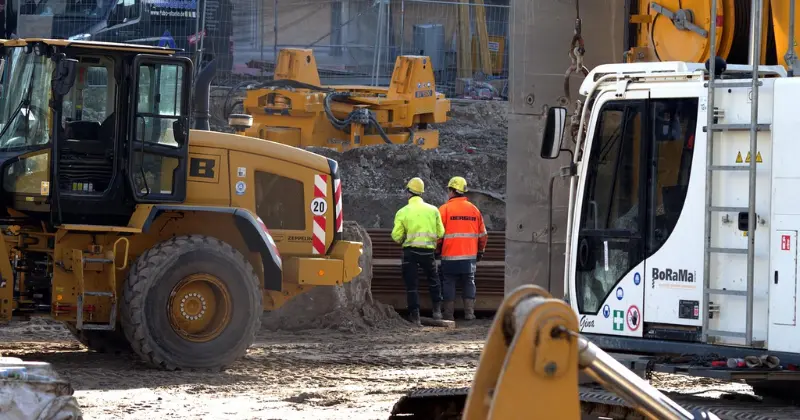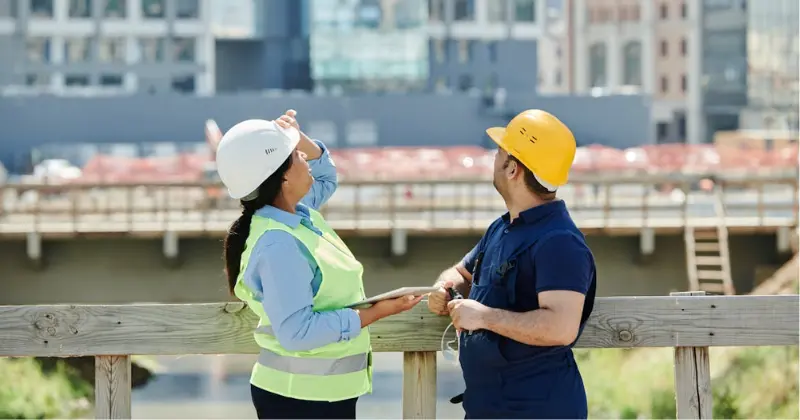10 mins read
What is a Construction Superintendent? The Skills and Responsibilities of the Designated On-site Leader

In general terms, a superintendent is someone who oversees work, is responsible for ensuring that work is completed on time, and regularly reports on progress. A construction superintendent fulfills these basic requirements and much more as they form a bridge between the office and hands-on workers at the jobsite. As projects grow more complex, the opportunities and salaries for superintendents in the US and Canada continue to expand.
In this blog post, we take a closer look at construction superintendent duties, skills, and salaries, and explain what makes this position essential and unique. We also review some of the software tools that are defining the superintendent role in the digital age.
What is a Construction Superintendent?
The construction site superintendent is the designated leader for a construction project; this role manages daily work and operations, enforces safety policies, and keeps progress on track. The superintendent is likely to spend most of their working hours at the construction site.
The superintendent job requires leadership skills, timing, and technical oversight, along with physical presence on site to ensure information is communicated and problems are addressed quickly. While meetings with various stakeholders are typical, safety walkthroughs, material delivery oversight, and equipment management tasks are likely to take the superintendent across the entire site over the course of the day.
How Much do Construction Superintendents Make?
The average construction superintendent salary in the US is now over USD $95,000 per year, with professionals in high-demand cities earning over $138,000. Experience and education also impact the pay for these positions.
The salary range in Canada is very similar, with an average of approximately USD $99,000. Superintendent salaries in British Columbia, Toronto, and the Northwest territories (northern regions) are significantly higher, reflecting the ongoing talent shortage in the industry overall. Project types also influence pay scales in Canada, as many superintendents seek out lucrative positions specializing in infrastructure or commercial construction.
The demanding superintendent role is a key to project success. Construction companies and clients recognize this fact as the salary and advancement expectations continue to rise.
Construction Superintendent vs Foreman
The construction foreman role is similar to the superintendent in many ways. Both parties ensure tasks are completed according to the schedule and budget, and both take steps to mentor crews and reinforce safety and quality on the jobsite. Leaders in each category spend most of their time on-site.
The biggest difference between the two roles is the level of responsibility. While the foreman oversees a specific crew (carpenters, plumbers, roofers, etc.), the superintendent oversees multiple trades, and the project overall. The similarities and distinctions make it essential for the foreman and superintendent to communicate and collaborate regularly. In some cases, multiple foremen from various trades report directly to the superintendent.
Key Construction Superintendent Duties and Responsibilities

Construction superintendent responsibilities extend from project start to finish, as they deal with dozens of major issues, problems, and decisions that help to keep the project on track. Many of these experienced “generalists” are becoming specialists, as various project types call for unique skills and experiences. However, most of these key duties and responsibilities are still applicable to almost any superintendent position.
Supervision and coordination
Supervision involves meetings and ongoing communication to answer important questions and prevent construction delays, and it also includes meticulous record-keeping and tracking so that progress and risks can be reported in a timely manner. Coordination of the various teams is also essential, since the superintendent maintains visibility into the activities and progress of all subcontractors and ensures the proper space, equipment, and instructions are available when each team needs them.
Budgeting and resource allocation
Project managers are typically responsible for creating and managing the budget, but the construction superintendent also gets involved in the process by reviewing on-site expenses and approving invoices when tasks are completed and verified. Resource allocation refers to the application of equipment, materials, and personnel to project tasks in a way that optimizes the available time without over-allocating or underutilizing available resources.
Safety and quality assurance
Safety and quality objectives often overlap, since both require planning, training, and oversight to manage effectively, and enforcement must be accompanied by a physical presence at the jobsite. The superintendent plays a key role in establishing and verifying these requirements, as they conduct daily site walks, correct hazardous situations and quality issues, and coordinate training and personal protective equipment (PPE) programs for all subcontractors.
Conflict resolution
Dispute referee is not on the official list of construction superintendent responsibilities, but the complex cross-functional interactions they manage often call for strong conflict resolution and mediation skills. Active listening to ensure the concerns of all parties are heard, and purposefully shifting the focus to processes rather than people are some of the tactics superintendents utilize to prevent minor disagreements from becoming serious disputes requiring third-party mediation.
What are Key Construction Superintendent Skills?

Like other on-site professionals, construction superintendents often acquire and improve their skills through a combination of personal experience, education, and training. While some of these important skills cannot be taught, others can be developed over time as the superintendent builds confidence and learns from both success and failure. The skills shared by top performers in this role usually include:
- Leadership: This essential trait helps others accomplish something they couldn’t do on their own. Accountability, honesty, and strong communication skills are among the leadership characteristics a superintendent must display to guide teams toward common project goals.
- Calm under pressure: Reviewing problems and scenarios from the comfort of an office is much different than resolving problems in the field when time is limited and decisions must be made quickly. Individuals that are suited for this role understand how to manage their emotions under pressure and utilize their training to resolve problems quickly and safely.
- Technical expertise: Overall industry experience and knowledge is a skill that can be developed and cultivated over time. A prospective construction site superintendent might find it useful to spend time working in various trades as they learn more about building codes, safety regulations, and project management principles.
- Time management: Time is often working against superintendents as they attempt to fit far too many tasks and activities into each working day. This personal time management dilemma can help them learn how to better utilize the time of all subcontractors and stakeholders, as they skillfully coordinate crews and site activities while keeping the dependencies and time constraints in mind.
How do I Become a Construction Superintendent?
Those who already possess the necessary superintendent skills, or are willing to learn them, have crossed the first hurdle towards a career in this lucrative field. Hands-on experience and formal education are also important, and there are multiple career paths to choose from.
While some progress from apprentice to tradesperson to foreman to superintendent, others start with a degree in construction management, civil engineering, or a related field of study, then move from their initial construction engineer role into a more hands-on superintendent position. 47% of the people in this position have obtained a bachelor’s degree. Additional steps that can be taken to accelerate the process include:
- Completing training courses and independent study on construction methods, project management, and leadership.
- Attending seminars, trade shows, and other events to network with industry professionals.
- Obtaining a formal certification in construction management (CMM) or other related subjects.
Common Construction Superintendent Tools
Superintendent tools go well beyond conventional saws, hammers, cranes, and ladders, as digital tools and technology redefine this role each day. Along with intelligent robots, drones, and advanced prefabrication methods that make projects and jobsites safer and more efficient, mobile procurement, resource management, and collaboration software tools continue to bring real-time intelligence and analytical capabilities directly to the field.
RIB Software includes an expanding portfolio of purpose-built solutions to improve superintendent awareness and efficiency:
- RIB Connex: This versatile solution is ideal for tracking construction processes, changes, and inspections using streamlined and connected workflows. Connex provides visibility into critical issues to improve response times and minimize rework.
- RIB Project: Collaboration and data access in the field is essential for superintendents, and RIB Project supports simultaneous document and drawing sharing with a large and dispersed workforce, allowing field and office teams to work productively across multiple locations.
- RIB BuildSmart: This versatile cost management solution provides superintendents access to up-to-date cost and financial information, with consolidated dashboards and reporting features to break down silos and eliminate manual processes.
Conclusion
The construction superintendent often becomes the central point of contact for clients and stakeholders looking for progress reports and timely project information directly from the field. The broad scope of coordination, management, quality, and safety responsibilities makes it essential to leverage advanced, mobile-friendly software tools to save time, improve collaboration, and make informed decisions quickly.
RIB Software provides a robust toolkit of construction software solutions that superintendents need to manage their diverse responsibilities while communicating effectively on scope changes, risks, material deliveries, equipment challenges, and much more.
To discover the benefits of RIB Software for superintendents and the clients, contractors, and project managers who rely on them, get your free demo today!
Most Recent
10 mins read
10 mins read
11 mins read
10 mins read
Blog Categories

Ebook











